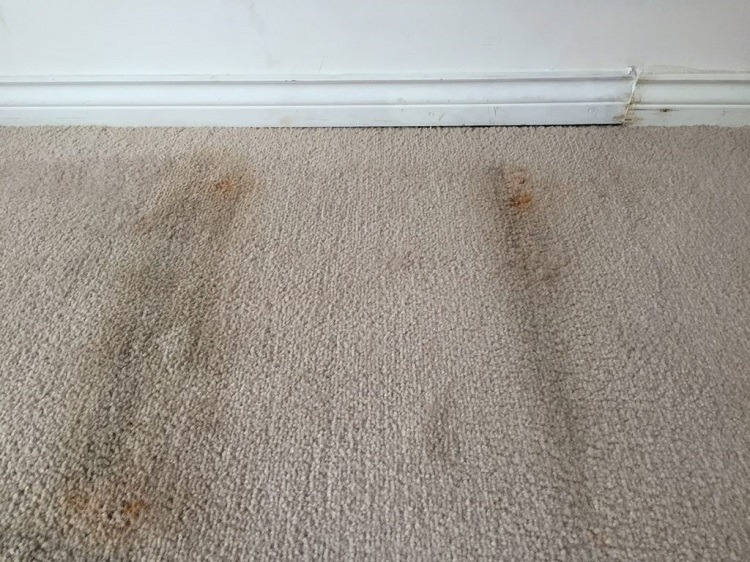Many homeowners and business owners often grapple with the challenge of maintaining a clean and healthy indoor environment. A common concern is distinguishing between signs of carpet mildew vs mold, a task that can seem daunting but is crucial for ensuring a safe and comfortable space.
In this article, we’ll delve into the distinct characteristics of mildew and mold, especially how these impact your carpets. By understanding these differences, you’ll be better equipped to take appropriate actions to safeguard your investment and health.

What is Carpet Mildew?
Carpet mildew typically refers to the early stages of mold growth. Mildew appears as a flat and powdery growth that can be white, gray, or yellow. While it may seem less severe than mold, it can spread quickly under the right conditions, leading to more serious problems over time.
Visual Signs of Mildew
Mildew on carpets often presents as discolored patches that are slightly lighter in color compared to mold. Its crucial to routinely check for these signs, especially in humid environments or in areas with poor ventilation. Mold remediation can become necessary if mildew is allowed to proliferate unchecked.
Understanding Carpet Mold
Mold is a more severe issue compared to mildew. It thrives in damp and dark conditions, feeding off organic materials within carpets. Mold tends to have a fuzzy or slimy texture and can appear in a variety of colors such as black, green, or brown.
Health Risks Associated with Mold
Exposure to mold can cause significant health issues, including respiratory problems, allergic reactions, and more severe conditions in those with compromised immune systems. Therefore, identifying signs of mold early can be crucial in preventing serious health complications.
Comparing Carpet Mildew vs Mold
When comparing mildew vs mold on carpet, consider their textures, coloration, and the potential health implications. While mildew might appear as a superficial issue, mold signifies deeper carpet infestations that require immediate attention.
Odor Differences
Another way to differentiate the two is by their odors. Mildew typically emits a milder, musty smell, whereas mold has a very strong, pungent odor. These olfactory clues can be significant indicators during your carpet inspections.
Preventing Carpet Mildew and Mold
Prevention is always better than cure. To prevent both mildew and mold, ensure your carpets stay dry and well-ventilated. Regular cleaning can also help minimize risks. You can explore natural prevention methods to keep your carpets safe.
Environmental Conditions Favoring Growth
Both mildew and mold thrive in warm, damp conditions. Keeping humidity levels low and ensuring your home has proper airflow can substantially mitigate their development. This external resource offers additional insights on maintaining healthy carpets.
What to Do When You Spot Mildew or Mold
Upon identifying mildew or mold, immediate steps include reducing moisture levels and cleaning the affected area. Proper cleaning can sometimes remove mildew, but mold often requires professional intervention.
Professional Mold Remediation Services
Considering the potential health risks, hiring a professional for mold remediation can ensure thorough removal. This step is crucial, especially in severe infestations.
DIY Mold and Mildew Removal Tips
For small patches of mildew, a mix of water and vinegar can sometimes do the trick. However, for mold remediation, utilizing professional services is advisable as improper handling can aggravate the spread.
Using Baking Soda as a Preventative
Baking soda can act as a mildew preventative, absorbing moisture from your carpets and thereby inhibiting the growth of both mildew and mold.
The Importance of Prompt Action
Timely action is essential in eliminating mildew and mold. By responding promptly, you protect not only your carpet’s longevity but also your household’s health and safety.
Why Spotting Signs Early Is Critical
Early detection of these signs can help in curb extensive mold growth and avoid costly repairs, ensuring your indoor environment remains healthy and vibrant.

When to Call a Professional
If mold covers more than 10 square feet or if you experience significant health reactions, contact a professional immediately. Experts understand the signs of carpet mildew vs mold and can provide effective solutions. To learn more about adequate carpet drying time, visit mold growth timelines.
FAQs
How Can I Tell If It’s Mold Or Mildew On My Carpet?
Mold is typically darker, fuzzier, and more pungent, while mildew is usually lighter and powdery. It’s essential to address any growth immediately.
Are There Health Risks With Mildew?
While mildew is less severe than mold, it can still cause respiratory irritations for sensitive individuals. Ensuring a mildew-free carpet is important for health.
What Is The First Step When I See Mold?
Your first step should be to address the source of moisture. It’s often necessary to consult professionals for extensive mold to ensure complete mold remediation.
This article contains affiliate links. We may earn a commission at no extra cost to you.


